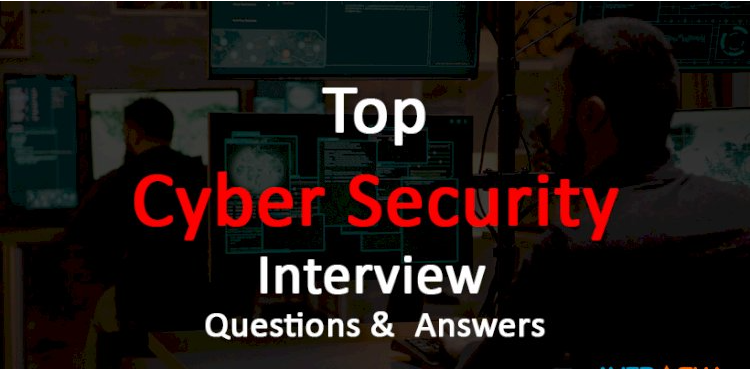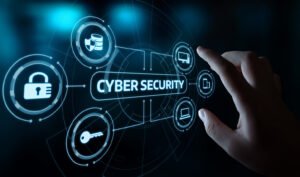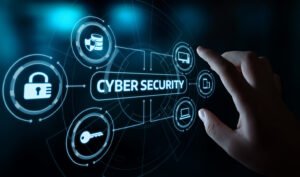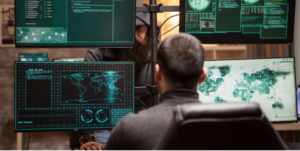Cybersecurity is a critical field that protects systems, networks, and data from digital attacks. As organizations increasingly rely on digital infrastructure, the demand for cybersecurity professionals continues to grow. Preparing for a cybersecurity interview requires understanding the essential concepts and staying up-to-date with the latest trends and threats. This article will cover some of the top Cyber security interview questions and answers to help you prepare for your next interview.
Top Cyber Security Interview Questions and Answers
What is Cybersecurity?
Answer:
Cybersecurity refers to the practice of protecting systems, networks, and data from digital attacks. It encompasses a range of technologies, processes, and practices designed to safeguard information from unauthorized access, theft, damage, or disruption. Cybersecurity aims to ensure the confidentiality, integrity, and availability of information.
What are the different types of cyber threats?
Answer:
Cyber threats come in various forms, including:
- Malware: Malicious software designed to harm or exploit systems. Examples include viruses, worms, ransomware, and spyware.
- Phishing: A social engineering attack where attackers impersonate legitimate entities to trick users into revealing sensitive information.
- Denial-of-Service (DoS) Attack: An attack that overwhelms a system with traffic, rendering it unavailable to users.
- Man-in-the-Middle (MitM) Attack: An attack where the attacker intercepts and alters communication between two parties.
- SQL Injection: An attack that involves inserting malicious SQL code into a database query, allowing attackers to manipulate the database.
- Zero-Day Exploit: An attack that targets a vulnerability not yet known to the software vendor.
What is the CIA Triad?
Answer:
The CIA Triad is a fundamental model in cybersecurity that represents three core principles:
- Confidentiality: Ensuring that sensitive information is accessible only to authorized individuals.
- Integrity: Maintaining the accuracy and completeness of data, ensuring it is not tampered with.
- Availability: Ensuring that systems and data are accessible to authorized users when needed.
What is a firewall, and how does it work?
Answer:
A firewall is a security device that monitors and controls incoming and outgoing network traffic based on predetermined security rules. It acts as a barrier between a trusted internal network and untrusted external networks. Firewalls can be hardware-based, software-based, or a combination of both. They work by filtering traffic based on criteria such as IP addresses, port numbers, and protocols, allowing or blocking traffic according to security policies.
Recommended To Read Also: Manual Testing Online Course with Certificate
What is encryption, and why is it important?
Answer:
Encryption is the process of converting plaintext into ciphertext using an algorithm and an encryption key. The ciphertext is unreadable without the corresponding decryption key. Encryption is important because it protects sensitive information from unauthorized access. Even if data is intercepted, it remains secure as long as the decryption key is not compromised.
What is a VPN, and how does it work?
Answer:
A Virtual Private Network (VPN) is a technology that creates a secure, encrypted connection over a less secure network, such as the internet. VPNs use tunneling protocols to encrypt data transmitted between the user’s device and the VPN server, protecting it from eavesdropping and unauthorized access. VPNs are commonly used to provide remote access to corporate networks and to protect user privacy.
What is multi-factor authentication (MFA)?
Answer:
Multi-factor authentication (MFA) is a security mechanism that requires users to provide two or more verification factors to gain access to a system or application. MFA typically includes a combination of:
- Something you know: A password or PIN.
- Something you have: A physical token, smart card, or mobile device.
- Something you are: Biometrics, such as a fingerprint or facial recognition.
MFA enhances security by adding additional layers of verification, making it more difficult for attackers to gain unauthorized access.
What is a DDoS attack, and how can it be mitigated?
Answer:
A Distributed Denial-of-Service (DDoS) attack involves multiple compromised systems flooding a target system with excessive traffic, overwhelming its resources and rendering it unavailable to legitimate users. DDoS attacks can be mitigated through various methods, including:
- Traffic filtering: Blocking malicious traffic at the network edge.
- Rate limiting: Limiting the number of requests a server can handle in a given time period.
- Content delivery networks (CDNs): Distributing traffic across multiple servers to absorb the attack.
- Web Application Firewalls (WAFs): Filtering and monitoring HTTP traffic to protect against DDoS attacks.
What is social engineering, and how can it be prevented?
Answer:
Social engineering is a technique used by attackers to manipulate individuals into divulging confidential information or performing actions that compromise security. Social engineering attacks often exploit human psychology, such as trust or fear, to deceive victims. Common social engineering attacks include phishing, pretexting, baiting, and tailgating.
Prevention strategies include:
- Education and awareness: Training employees to recognize and respond to social engineering attempts.
- Security policies: Implementing and enforcing strong security policies, such as requiring verification of identity before sharing sensitive information.
- Access controls: Limiting access to sensitive information to authorized personnel only.
What is a zero-day vulnerability?
Answer:
A zero-day vulnerability is a software flaw that is unknown to the software vendor and has no available patch or fix. Because the vendor is unaware of the vulnerability, it can be exploited by attackers without warning. Zero-day attacks can be highly damaging because they exploit unknown vulnerabilities. Organizations can mitigate the risk of zero-day attacks by implementing robust security measures, such as intrusion detection systems (IDS) and regular software updates.
What is a honeypot, and how is it used in cybersecurity?
Answer:
A honeypot is a decoy system or network designed to attract and monitor cyber attackers. It serves as a trap for malicious actors, allowing security professionals to study their techniques and tactics. Honeypots can be used to detect unauthorized access, gather intelligence on potential threats, and analyze attack patterns. They are often deployed as part of a larger security strategy to improve an organization’s overall defense posture.
Recommended To Read Also: Qa software testing courses
What is the principle of least privilege?
Answer:
The principle of least privilege is a security concept that states that users and systems should be granted the minimum level of access necessary to perform their tasks. This principle helps reduce the risk of unauthorized access and minimizes the potential damage from security breaches. By limiting access to only the resources needed, organizations can better protect sensitive information and systems.
What is an intrusion detection system (IDS)?
Answer:
An intrusion detection system (IDS) is a security tool that monitors network traffic and system activity for signs of malicious activity or policy violations. IDS can be classified into two types:
- Network-based IDS (NIDS): Monitors network traffic for suspicious patterns.
- Host-based IDS (HIDS): Monitors system activity on individual hosts, such as file integrity and system logs.
IDS can operate in two modes: passive and active. In passive mode, the IDS alerts administrators of potential threats, while in active mode, it can take actions to block or mitigate the threat.
What is a security incident, and how should it be handled?
Answer:
A security incident is any event that threatens the confidentiality, integrity, or availability of an organization’s information or systems. Security incidents can include data breaches, malware infections, unauthorized access, and more. Handling a security incident involves several steps:
- Detection: Identifying the occurrence of the incident.
- Containment: Isolating the affected systems to prevent further damage.
- Eradication: Removing the root cause of the incident, such as malware or vulnerabilities.
- Recovery: Restoring systems and data to normal operations.
- Post-incident analysis: Reviewing the incident to identify lessons learned and improve security measures.
What is a security audit?
Answer:
A security audit is a systematic evaluation of an organization’s information systems, processes, and controls to assess their effectiveness in protecting against security threats. Security audits can be internal (conducted by the organization’s own staff) or external (conducted by independent third parties). Audits typically involve reviewing security policies, analyzing network and system configurations, and testing security controls. The goal of a security audit is to identify vulnerabilities and provide recommendations for improving security.
What is two-factor authentication (2FA)?
Answer:
Two-factor authentication (2FA) is a security mechanism that requires users to provide two forms of verification before accessing a system or application. The two factors typically include:
- Something you know: A password or PIN.
- Something you have: A physical token, mobile device, or smart card.
2FA adds an extra layer of security by requiring two separate pieces of evidence to verify a user’s identity. This makes it more difficult for attackers to gain unauthorized access, even if they have obtained one of the factors.
What is the difference between symmetric and asymmetric encryption?
Answer:
Symmetric and asymmetric encryption are two types of cryptographic techniques:
- Symmetric Encryption: Uses a single key for both encryption and decryption. The same key must be shared securely between the sender and receiver. Symmetric encryption is generally faster but requires secure key management.
- Asymmetric Encryption: Uses a pair of keys—a public key and a private key. The public key is used for encryption, while the private key is used for decryption. The public key can be shared openly, while the private key must be kept secure. Asymmetric encryption provides better security for key exchange but is slower than symmetric encryption.
What is a security policy?
Answer:
A security policy is a formal document that outlines an organization’s approach to managing and protecting its information assets. It defines the rules, procedures, and guidelines for ensuring data security and compliance with legal and regulatory requirements. Security policies typically cover areas such as access control, data protection, incident response, and acceptable use of resources. They serve as a foundation for an organization’s security practices and help establish a culture of security awareness.
What is an SSL/TLS certificate, and why is it important?
Answer:
An SSL/TLS certificate is a digital certificate that authenticates the identity of a website and enables an encrypted connection between the website and the user’s browser. SSL (Secure Sockets Layer) and TLS (Transport Layer Security) are cryptographic protocols that provide secure communication over the internet. SSL/TLS certificates are important because they protect sensitive information, such as credit card numbers and login credentials, from being intercepted by attackers. They also help establish trust with users by verifying the legitimacy of the website.
What is a botnet?
Answer:
A botnet is a network of compromised computers, known as bots or zombies, controlled by an attacker. Botnets are often used to carry out malicious activities, such as distributed denial-of-service (DDoS) attacks, spamming, and data theft. Botnets can consist of thousands or even millions of compromised devices, making them a powerful tool for cybercriminals. They are typically controlled remotely through command-and-control (C&C) servers, allowing attackers to orchestrate large-scale attacks.
Conclusion
Preparing for a cybersecurity interview requires a solid understanding of fundamental concepts, as well as staying informed about the latest threats and technologies. By reviewing these top cybersecurity interview questions and answers, you can build confidence and demonstrate your knowledge to potential employers. Remember to continue learning and staying up-to-date with industry developments, as cybersecurity is a constantly evolving field. Good luck with your interview preparation!






























